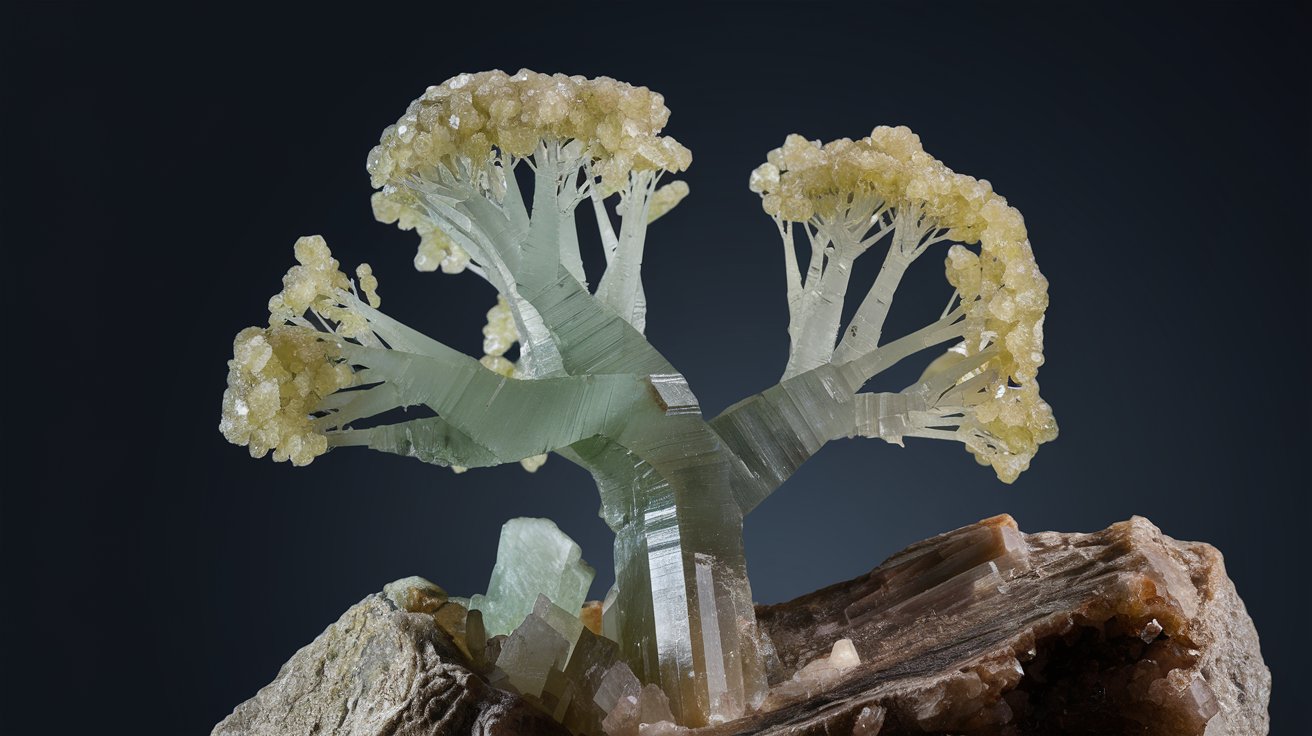
Athabascaite is a rare mineral with a unique charm. Found primarily in the Athabasca Basin of Canada, it has intrigued geologists and mineral enthusiasts alike. This mineral, composed mainly of copper selenide, boasts a striking metallic luster and a deep, dark color. Athabascaite forms in hydrothermal veins, often alongside other selenium minerals. Its rarity and distinct properties make it a fascinating subject for study. Whether you're a budding geologist or just curious about the natural world, learning about Athabascaite can be both educational and exciting. Let's dive into 30 intriguing facts about this captivating mineral!
Key Takeaways:
- Athabascaite is a rare, shiny mineral found in Canada, known for its unique properties and metallic luster. It's valuable for scientific research and a must-have for mineral collectors.
- Named after the Athabasca Basin, Athabascaite is a visually striking mineral with a steel-gray color. Its rarity and intriguing history make it a fascinating subject for scientific exploration and a prized addition to mineral collections.
What is Athabascaite?
Athabascaite is a rare mineral named after the Athabasca Basin in Canada. This mineral is known for its unique properties and intriguing history. Let's dive into some fascinating facts about Athabascaite.
-
Athabascaite is a copper selenide mineral, which means it contains both copper and selenium.
-
The mineral was first discovered in 1979 in the Athabasca Basin, a region famous for its rich uranium deposits.
-
Athabascaite typically forms in hydrothermal veins, which are cracks in rocks filled with mineral-rich water.
-
The mineral has a metallic luster, giving it a shiny, reflective appearance.
-
Athabascaite is opaque, meaning light cannot pass through it.
-
The mineral's color ranges from steel-gray to black, making it quite striking.
-
It has a hardness of 2.5 on the Mohs scale, which means it is relatively soft and can be scratched by a fingernail.
-
Athabascaite has a specific gravity of 6.7, indicating it is denser than many other minerals.
-
The mineral is often found in association with other copper and selenium minerals, such as umangite and klockmannite.
-
Athabascaite is named after the Athabasca Basin, where it was first discovered.
Chemical Composition and Structure
Understanding the chemical composition and structure of Athabascaite helps us appreciate its unique characteristics.
-
The chemical formula for Athabascaite is Cu5Se4, indicating it contains five copper atoms and four selenium atoms.
-
The mineral crystallizes in the orthorhombic system, which means its crystals have three unequal axes at right angles.
-
Athabascaite's crystal structure is complex, with copper and selenium atoms arranged in a specific pattern.
-
The mineral's structure contributes to its metallic luster and density.
-
Athabascaite is chemically stable, meaning it does not easily react with other substances.
Occurrence and Distribution
Athabascaite is found in specific geological settings and locations around the world.
-
The Athabasca Basin in Canada is the primary location where Athabascaite is found.
-
The mineral is also found in other regions with similar geological conditions, such as the Katanga Copperbelt in Africa.
-
Athabascaite is often found in hydrothermal veins, which form when mineral-rich water flows through cracks in rocks.
-
The mineral can also be found in sedimentary rocks, where it forms through chemical reactions between copper and selenium.
-
Athabascaite is relatively rare, making it a valuable find for mineral collectors and geologists.
Uses and Applications
While Athabascaite is not widely used in industry, it has some interesting applications.
-
The mineral is primarily of interest to mineral collectors due to its rarity and unique properties.
-
Athabascaite can be used in scientific research to study the behavior of copper and selenium in geological processes.
-
The mineral's unique properties make it a subject of interest for materials science and engineering research.
-
Athabascaite can also be used as an indicator mineral in geological exploration, helping geologists locate other valuable minerals.
Interesting Facts
Here are some additional intriguing facts about Athabascaite that highlight its uniqueness.
-
Athabascaite is named after the Athabasca Basin, but it is not the only mineral named after this region. Other minerals, such as athabascaite and athabascaite, also share this distinction.
-
The mineral's discovery in 1979 was significant because it helped scientists better understand the geological history of the Athabasca Basin.
-
Athabascaite's metallic luster and steel-gray color make it a visually striking mineral, often sought after by collectors.
-
The mineral's relatively low hardness means it can be easily scratched, so it must be handled with care.
-
Athabascaite's density and specific gravity make it heavier than many other minerals, which can be surprising given its small size.
-
The mineral's rarity and unique properties make it a valuable addition to any mineral collection, as well as a fascinating subject for scientific research.
Final Thoughts on Athabascaite
Athabascaite, a rare copper selenide mineral, holds a unique place in the world of geology. Found primarily in the Athabasca Basin of Canada, this mineral is not only fascinating due to its rarity but also because of its distinct properties. Its metallic luster and unique crystal structure make it a subject of interest for both scientists and collectors. Understanding Athabascaite's formation and characteristics can provide insights into geological processes and the conditions that lead to the creation of such rare minerals.
For those intrigued by the natural world, Athabascaite offers a glimpse into the complexities and wonders of mineralogy. Whether you're a seasoned geologist or just someone with a curiosity for rare minerals, Athabascaite stands out as a remarkable specimen worth exploring. Keep an eye out for this unique mineral, and who knows, you might just stumble upon a piece of geological history.
Frequently Asked Questions
Was this page helpful?
Our commitment to delivering trustworthy and engaging content is at the heart of what we do. Each fact on our site is contributed by real users like you, bringing a wealth of diverse insights and information. To ensure the highest standards of accuracy and reliability, our dedicated editors meticulously review each submission. This process guarantees that the facts we share are not only fascinating but also credible. Trust in our commitment to quality and authenticity as you explore and learn with us.


